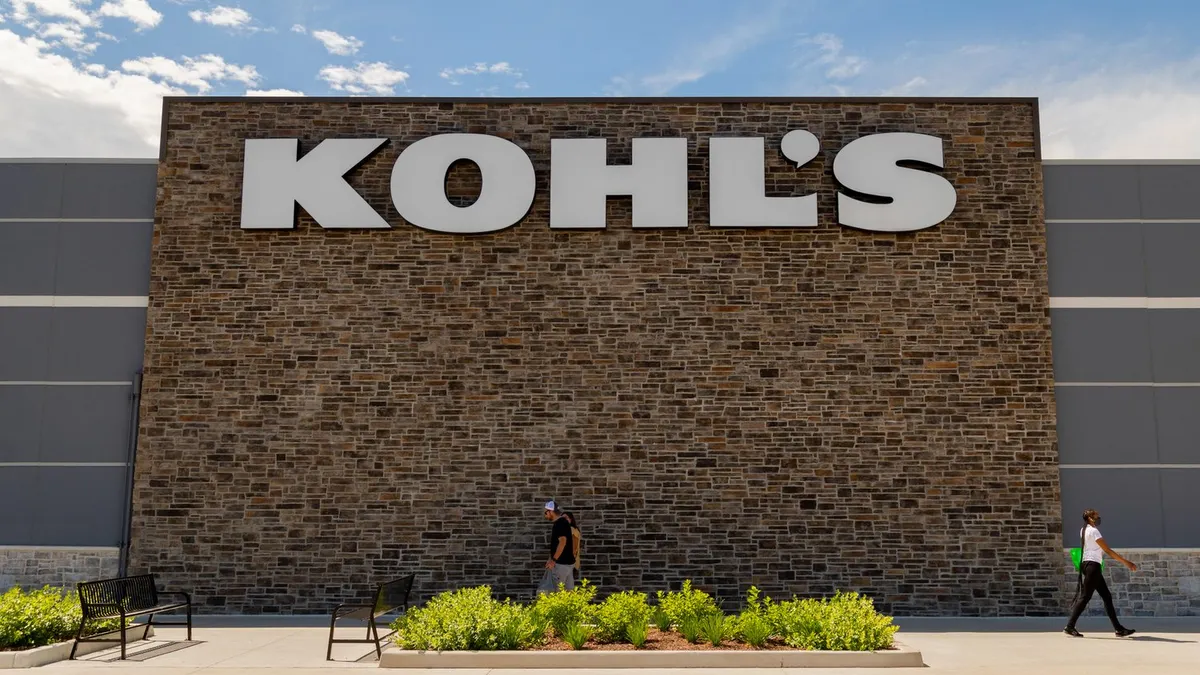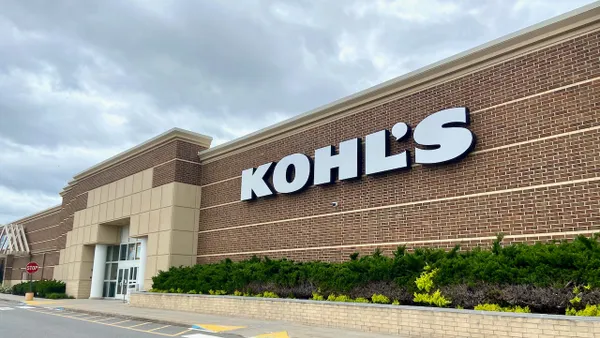Dive Brief:
-
As Kohl’s continued its turnaround efforts in Q2, net sales fell 5.1% year over year to $3.3 billion and comparable sales fell 4.2%.
-
Gross margin expanded by 28 basis points to 39.9%. Net income more than doubled, reaching $153 million from $66 million a year ago. That includes $129 million from the settlement of a credit card interchange fee lawsuit; excluding that, net income tumbled over 60%.
-
Kohl’s executives singled out private label as most important to the retailer’s strategy, one of many initiatives from ex-CEO Tom Kingsbury. Its owned brands outperformed the company overall, improving 500 basis points from Q1, and the retailer plans to introduce more.
Dive Insight:
Despite being buffeted by outside forces beyond its control, Kohl’s said its Q2 results surpassed its expectations.
“Although we are encouraged by our second quarter results and the improved sales trend we saw throughout the quarter, we also recognize that consumers continue to be pressured and are being choiceful with their purchases,” Interim CEO Michael Bender told analysts Wednesday. “Specifically, our lower- to middle-income customers remain the most challenged, while our higher income customers have proven to be more resilient.”
That has many Kohl’s customers gravitating toward lower opening price points, and a few of the retailer’s tactics cater to that, he said. This includes growing its suite of owned brands — a win-win given their higher margins — and expanding coupon discounts to apply to more name brand products, executives said.
Standout private labels in the period included Tek Gear, Simply Vera Vera Wang, Lauren Conrad and FLX. The retailer recently introduced new ones, including Miryana, Hotelier and Mingle & Co., and plans to expand FLX to children’s, which will be available online and in 300 stores.
Despite the expectations beat and improved margins, the leadership turnovers of recent months plus stumbles in execution have hobbled Kohl’s comeback, so revenue declines are likely to continue this year, according to Fitch Ratings Senior Director David Silverman. The chief executive who arrived in January, Ashley Buchanan, was out by May due to conflicts of interest.
Still, Kohl’s has scale on its side, along with “its reasonably positioned store base and digital infrastructure, and its ability to invest $400 million in capital expenses this year,” Silverman said in emailed comments.
Analysts called out effective inventory and cost controls; inventory was down 5% at quarter end.
Understaffed stores and a lack of cohesion in the turnaround are also thwarting Kohl’s recovery, though, according to GlobalData Managing Director Neil Saunders. Bender acknowledged an “inconsistent in-store experience without a unifying point of view of what we want the customer to feel when they walk in the store” and reiterated plans to change product placement and make other merchandising adjustments.
The retailer now expects net sales to decline 5% to 6%, better than its previous 5% to 7%; comparable sales to decline 4% to 5%, slightly better than the previous 4% to 6%; and gross margin expansion of about 30 basis points, the low end of its previous guidance of 30 to 50 basis points. Despite the slight upgrade, this update reflects a certain lack of confidence at least in the near term, according to Saunders.
The bottom line is also weak, given the Q2 profit decline (minus the legal settlement) and cash and equivalents down nearly 25%.
“Kohl’s cash position has also deteriorated and there are reports of delays in suppliers being paid,” he said in emailed comments. “This all puts Kohl’s in danger of being sucked into a doom loop where it is too weak to invest to remedy problems which, in turn, cause sales to be squeezed still further.”















